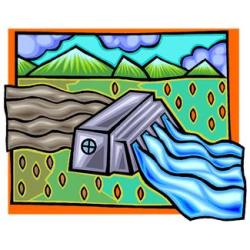Source Institutions
Source Institutions
Add to list Go to activity
Activity link broken? See if it's at the internet archive

In this activity, learners simulate nature's water filtration system by devising a system that will filter out both visible and invisible pollutants from water. Each group is asked to design a water filtration system given only a limited number of materials. They are asked to both sketch and write down step by step procedures before filtering a sample of the "dirty" water. Learners make modifications and share their findings about what worked or didn't work. This activity is the second of a set of activities on the page and can be used independently or in conjunction with the first activity called "Who Dirtied the Water?" in which learners simulate the sources of water pollution.
- 5 to 10 minutes
- 1 to 2 hours
- $5 - $10 per group of students
- Ages 8 - 18
- Activity, Experiment/Lab Activity, Lesson/Lesson Plan, Model
- English
Quick Guide
Materials List (per group of students)
- beakers
- rubber bands
- nylon mesh
- sand
- charcoal
- cotton balls
- water
- graduated cylinders
- test tubes
- ring stands
- filter paper
- dirty water
Subjects
-
Earth and Space Science
- Earth Processes
-
Earth Structure
- Oceans and Water
- Earth's History
-
Life Sciences
-
Ecology
- Human Impact
-
Ecology
-
Engineering and Technology
-
Engineering
- Environmental Engineering
-
Engineering
-
The Nature of Science
-
Science and Society
- Risks and Benefits
-
The Scientific Process
- Conducting Investigations
- Formulating Explanations
- Communicating Results
-
Science and Society
-
The Nature of Technology
-
Technology and Society
- Impacts of Technology
- Technology and the Environment
-
The Design Process
- Invention and Innovation
- Problem Solving
- Troubleshooting and Maintenance
-
Technology and Society
Informal Categories
- Model Building
- Nature and Environment
Audience
To use this activity, learners need to:
- see
- touch
Learning styles supported:
- Involves teamwork and communication skills
- Uses STEM to solve real-world problems
- Involves hands-on or lab activities
Other
This resource is part of:
Access Rights:
- Free access
By:
- Hood, Carmen
Rights:
- All rights reserved, Access Excellence @ the National Health Museum, 2009
